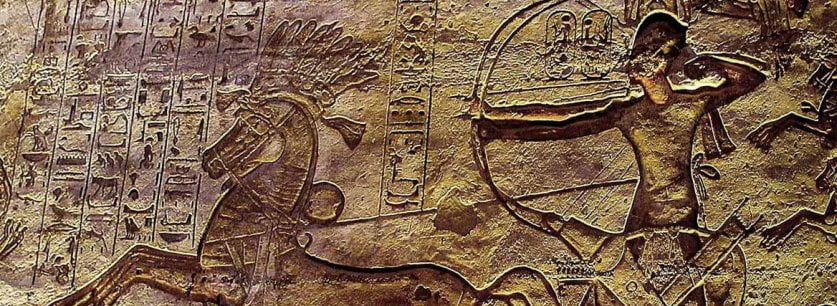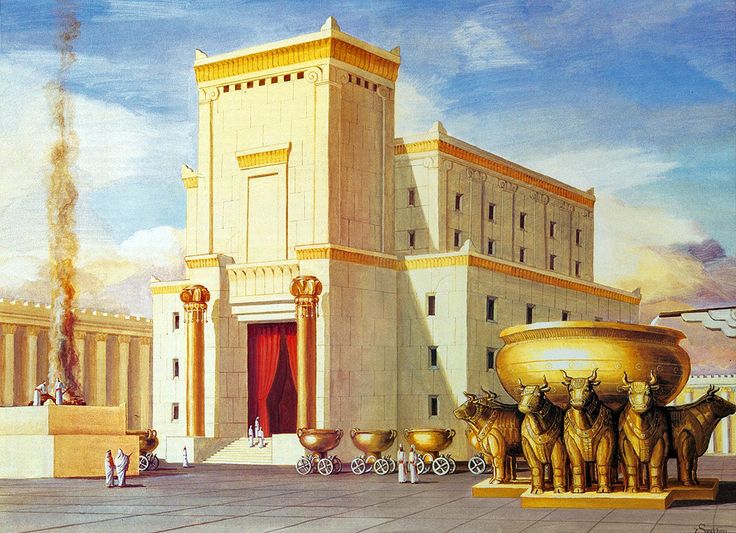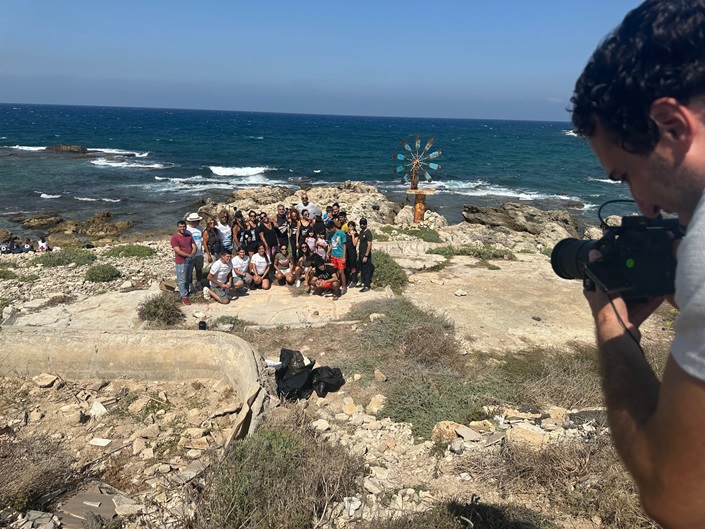
By Emad El-Din Aysha, PhD
Was watching an annoying science fiction movie the other day called variously The Holy Relic and The Hunt for the Hidden Relic (2002), and was struck by a number of things, good and bad. First, the bad. The movie is German, adapted from a novel by Andreas Eschbach, about an archaeology student digging away in Israel who stumbles on an ancient skeleton that must have come from the world of the present day. (It has modern tooth fillings and a manual for a video camera that still hasn’t been built but the bones are dated at 2000 years ago). No sooner has he made this discovery that a secret society left over from the time of the Inquisition goes after him, terrified that he has found the said video camera and what it filmed at the time of Christ.
The Cross-Eyed Orientalist
The religious dimension of this doesn’t concern me in the slightest. We’ve seen it all before in Raiders of the Lost Ark and The Da Vinci Code, and I have to admit the movie is quite entertaining in terms of car chases and humour and scienrific detective work. What bothers me is the way that Israel-occupied Palestine is portrayed. (I don’t think the word Palestine was ever actually used, just the generic Arabs). The hero is an exceedingly blond German and he befriends and later falls in love with an Israeli archaeologist that is tanned, dark-haired and attractive, and she even falls for him too and forgets her original fiancé. (In time honoured ‘dishonourable’ Western fashion, the fiancé willingly gives up his bride-to-be for the better man, so to speak, conveniently after he gets shot and dies slowly enough to make the proclamation!) The Arab-Israeli conflict is incidental to the happenings and the Israelis here are technically the good guys, balancing religion with science, whereas the Vatican goons are religious fanatics and moral hypocrites, while the German boy hero is an avowed atheist. But, as if that wasn’t bad enough, the way the Palestinians are portrayed is horrendous.
There’s the compulsory Bedouins and goat farmers, all dressed like Moroccans with Moroccan accents, but there’s also the big noses and bad teeth and the image of people willing to do anything for money. The only ‘noble’ Arab you see in the whole movie is way at the end, and he’s most definitely the exception to the rule, is a Christian. And he’s not event technically an Arab, but a monk from an Armenian church. Contrast this to an Arab who gets paid off, with the Vatican double agent paying him off saying ‘peace be upon you’, implying that he’s a Muslim. The moviemakers clearly forget that this is more an Arabic expression than an Islamic one and the equivalent Hebrew phrase is ‘shalom’. The pairing of the German and the Israeli girl (the actress is actually German) is clearly meant to be some form of reconciliation, the Germans saying ‘I’m sorry’ for all the decades of anti-Semitism and persecution, not least under Hitler.

Look a little closer, however, and you’ll find that the Israelis themselves are paired in with the unwashed Arabs. You constantly see Islamic-style architecture and hear the azan (call to prayer) in thoroughly Israeli settings – the bleached hero never ventures into the so-called Arab quarter. There’s also the omnipresence of lethargic bureaucrats with Middle Eastern features, but all Israelis to a man. (You even notice this with the German crew. The blond hero is a hyperactive guy, whereas his darker haired friend does nothing but sleep all the time). Not to mention that the Israeli authorities seem powerless or apathetic up against the Vatican badguys who can clearly bribe their way into anything, including police stations and hotel lobbies. (Same goes for the business tycoon funding the archaeological dig, whom you later learn is also doing experiments on time travel and time paradoxes). So much for the Germans making amends with the ‘Other’ and engaging in self-critique.
Now that’s get to the good stuff, the ‘reasonably’ good stuff. The relic they’re looking for is supposed to be hidden within the so-called Wailing Wall. The only catch is, as one of the Israeli characters figures out, that this Wall isn’t the original one left over from the time of the Roman destruction of Jerusalem. It can’t be. Why? Because the Masjid al-Aqsa itself isn’t the exact same one from back when it was built because it had been destroyed and rebuilt several times in history, just as the whole city of Jerusalem was destroyed and rebuilt several times in history.
For once they got the historical facts right! Earthquakes knocked down the Masjid Al-Aqsa several times, along with the Church of the Nativity, and they had to be rebuilt. And Jerusalem was destroyed by invading and withdrawing armies long after the Biblical Romans had departed this earth. So how on earth can the Israelis claim that the Wailing Wall is the Hait al-Buraq (Wall of the Buraq, the heavenly beast that took the Prophet to Jerusalem on the Night Journey, PBUH). They can’t even claim it was built on top of it, the foundation stones so to speak, because the remains of foundation stones of the older mosques and churches and the whole city are deeper below, several lawyers of them in fact, because of repeated destructions and re-buildings. That would be like claiming that a book at the bottom of a pile of books is the same book as the one at the top of that self-same pile!
Its sheer lunacy and the Israelis know it. When you actually stop to think of it this realisation is bloody obvious because they’re doing archaeological digs underneath the mosque and have been doing so for ages, looking for the foundation stones of the Temple and the so-called remaining wall. But if they already know where it is and go there and wail and do their religious ceremonies, why are they still looking for it?
The truth is they don’t know where it is, a truth they don’t want to admit to to an international audience, or else the house of cards that is Zionist mythology would fall apart. I should add here that the Vatican badgys are after the relic, the video-recording, because they’re afraid it will debunk their own religious beliefs. They see no moral dilemmas in this, fighting for something that may turn out to be phoney, not to mention torturing and killing people (including fellow Christians) in the name of an all merciful God. (Much like the Crusaders before them). It’s all an example of what Plato called the ‘Noble Lie’.
Another plus point, by a bizarre twist of fate, is that the Israeli archaeologist in the movie says the relic must now be way down in the sewers beneath the city, which is why the hero has to get into scuba gear. This hooks into a little pet research project of my own, concerned with water, history and – wouldn’t you know it – science fiction!!
Watery Words of Wisdom
I’d read an annoying little article the other day about Israeli or Jewish science fiction claiming that some of the stories in The 1001 Nights were of Jewish origin, if you can believe it, specifically the story of the island in the ocean that turned out to be a giant whale. The story is attributed to Reb bar bar Hanna, who lived in the 3rd century CE. But, if you take a closer look at Mr Hanna – (isn’t that an Arabic name?) – you find that he was living in Babylonia and specifically in the Sassanid period. That means he probably had access to Indian mythology and adventure stories, which are a key source of The 1001 Nights. Shahrazad and Shahrayar are Persian names, not Arabic ones, and the original stories are a mixture of Arabic, Persian and Indian stories that were Islamisized much later in history. (The individual stories of The 1001 Nights pop up in other Arab story collections, just minus the mouthpiece of Shahrazad and the counter-point of Shahrayar).
Even Baghdad is a Persian word, in origin, and much of Iraq in a crossover point with Iran and its cultural sphere, which extends into India. So that explains that, but it got me thinking about the whole relationship of the Israelites with the sea, and why someone like Reb bar bar would be interested in recounting such tales of daring do to such an inland people as the Hebrews.
It’s something in their cultural makeup, a once ‘lost opportunity’ that they’ve been grieving about until the establishment of the modern state of Israel; with its maritime focus, as established previously. Just look at the story of Jonah (PBUH) and the whale, in the Quran and the Bible, and the ‘restrictions’ that Jews have over eating certain kinds of seafood. More important still is the Quranic story about the Jewish fishing community that broke the Sabbath by placing their nets in the waters on Friday and then collecting the ensnared fish on Sunday, thinking they could get away with a legal loophole with the Almighty. (And we all know what happened to those rascals, don’t we!) The point is, all these stories would indicate that Jews, inland people that they were, had access to the sea at some point in their history, but that they got greedy and were punished for it and are still being punished for it to this day with their dietary restrictions, self-imposed or otherwise. What is more, Zionism in part is in an attempt to reverse the tide of nautical history and recapture these semi-mythical glory days.
Don’t take my word for it. Check out what the Bible itself has to say:
26 King Solomon also built ships at Ezion Geber, which is near Elath in Edom, on the shore of the Red Sea.[a] 27 And Hiram sent his men—sailors who knew the sea—to serve in the fleet with Solomon’s men. 28 They sailed to Ophir and brought back 420 talents[b] of gold, which they delivered to King Solomon.
(1 Kings 9:26-28, New International Version).
Look at the specific combination of words. Elath in Edom, which means that Eilat is not an Israelite city to begin with. It’s a whole other place, kingdom, race of people. It could be the Israelites conquered Edom, or that they forged an alliance with them and intermarried instead.
Saul had an Edomite among his shock troops, when in pursuit of the young David, and the clans of the tribe of Judah married into Edomite clans, and the Edomites were also condemned for not showing up for battle (like the Spartans), which would imply they were allies. But what is it that interested them in Elath to begin with, let alone Jerusalem, and what has Hiram got to do with any of this?
Watching King David (1986) all over again you kept wondering about where all this fabulous wealth was coming from, with the prophet king literally showering his people in gold and stuffing them full of red meat come banquet time? And where’d he get the money he needed to build the Temple, let alone his palace of cedars? The palace of cedars was a gift from the Phoenicians – where else can you get cedars from – but why would they care to reward him on his victories against the Philistines and his newly founded kingdom? And who is Hiram anyway?
Here’s what I found on Bible websites:
HIRAM hī’ rəm (חִירָ֨ם; LXX Χιράμ; but Χειράμ, in 2 Sam 5:11 and 1 Chron 14:1). 1. The king of Tyre in the reigns of David and Solomon, with whom he lived on very friendly terms. After David captured Jerusalem and made it his capital, Hiram sent him wood, carpenters, and stonemasons to build his palace (2 Sam 5:11). On Solomon’s ascension to the throne, Hiram wrote him that he hoped that the long-existing friendship between David and him would continue between Solomon and him. Solomon asked for help in building a temple and a new palace, projects which took him twenty years to complete. Hiram sent him wood—cedar, pine, and algum—from the forests of Lebanon and all the gold he needed (1 Kings 5:1f.; 2 Chron 2:3f.), together with all the skilled workmen necessary for erecting and furnishing them. In return, Solomon sent him every year food for his household—twenty thousand cors of wine and twenty thousand cors of olives (1 Kings 9:10-14). He also gave Hiram twenty cities in Galilee, but when Hiram inspected them, he told Solomon he was not well pleased with them (1 Kings 9:10-14). When Solomon built a fleet of ships at Ezion-geber, on the shore of the Red Sea, in Edom, Hiram sent him experienced seamen to work with Solomon’s men on the ships. Once every three years they brought to Solomon gold, silver, ivory, apes, and peacocks.
It seems, then, that the Israelites were ‘bankrolled’ in their conquests by the Phoenicians up north. Nothing like a good old-fashioned proxy war!

The Phoenicians wanted access to the Red Sea to trade with the East and the only people who could open up the Red Sea for them were the Jews, people who had a mutual enemy in the Philistines. The Jews were just pawns in the trade wars of others and weren’t busily trying to retake some fictional promised land that had been taken away from them. Hence, their interest in Jerusalem, a city at the quite literal epicentre of Cannan. That would explain all the fabulous wealth King David aka Richard Gere was suffering from in the movie and, more critically, all the so-called victories they had against such a battle-hardened people as the Philistines. The Seas Peoples, it seems, were still Bronze Age warriors whereas David (PBUH), as we know from the Quran, had Iron Age armour at his disposal – more on this below. But being a blacksmith isn’t enough if you don’t have the money to bankroll steel manufacture on a mass scale, and the Middle East is not well endowed with iron, to this day, which would imply that the stuff was imported from somewhere else.
You still have to take these Biblical accounts with a pinch of salt, mind you, since nobody quite knows where ‘Ophir’ is and scholars disagree over the translation of peacocks, sometimes translating it as baboons. (Getting sharks and dolphins confused is one thing but this is ridiculous!) Some say Ophir is India, and I can certainly believe that the Phoenicians could trade that far away east, but others have correctly pointed out that transporting peacocks isn’t easy given how fragile they are as birds.[1] Others have speculated that they were in fact baboons and that Ophir is consequently in Africa. (In actuality, there are peacocks in Africa, just a different breed, which means you can have the peacocks’ translation instead of baboons but still have Ophir in Africa). To make matters even more complicated some have even speculated that Eilat wasn’t even a city on the Red Sea, but the Mediterranean, since ‘Red Sea’ itself is a translation. (There isn’t even any agreement that Moses crossed the Red Sea to get to the Promised Land since he may just have crossed a ‘reed’ sea, an inland river or man-made canal full of reeds).
Then there’s the whole misidentification of the capital city of David (called the City of David, on mount Zion) with Jerusalem, in line with previous articles. Jerusalem is no different than Eilat, ultimately, a booby prize in the quest to open trade roots to elsewhere and no more. Nothing of any religious significance whatsoever, to those doing the conquering except for the fact that they conquered it and chose (sacrilegiously) to build a Temple there which they could have easily built elsewhere if they’d picked another city to be their capital, which they in fact did since Zion isn’t Jerusalem, just next to it.
Look at the name of the so-called holy city. Jerusalem is not a Hebrew word to begin with. Here’s a Haaretz article on the topic, no less, citing Dr. Yuval Baruch (head of the IAA's Jerusalem district):
Baruch explains that the city’s name is an amalgamation of two ancient Canaanite words: “Yeru” (founded) and “Shalem” (the name of an important Canaanite god); thus, the name means “the city founded by the god Shalem.”
This was about an archaeological discovery made in occupied Palestine, an inscription in Hebrew of a Jewish person’s name. To make matters worse, for themselves, the article explains that:
To be precise, the inscription is written in Aramaic, the local lingua franca of that era, in Hebrew letters, and appears on a stone column drum from an earlier building that was reused in the Roman structure. It reads: "Hananiah son of Dodalos of Jerusalem."
The script is Hebrew but the language Aramaic, and the original name of the city is Canaanites, and pagan at that. (Hananiah, sounds like a Jordanian name). That’s also what Palestinian historians argue, adding that David (PBUH) was able to muscle the Jebusites out of the way after taking over the mountaintop fortification of Zion, their original centre of operations.[2]
Worse still is that the city of Jerusalem itself may be misidentified!
Down the Spigot Hole
A professor friend once got me a stunning article by a Syrian historian from Damascus University, Dr. Suhayl Zakar, that went as far as extinguishing the Jews from Biblical and Quranic history altogether. You can disagree with him but you have to be impressed by his fortitude and commitment to scientific objectivity, relying on history and archaeology first, independently of scripture, noting that many of the currently existing translations of old relics and findings were done by Orientalists with a religious and political agenda. We need to have our own reading of the historical record and the ‘words’ written or etched down.
I’d noted previously the curious similarities between the words Quds, Qadish (or Kadesh in English) and good old Qadissiyah (in Iraq), and the issue of Mecca being a wadi-valley without vegetation. Well, Dr. Suhayl explains that the original (and Quranic) name for Mecca was Becca, since bak in old Arabic is a reference to the mouth and the act of speaking, and is a word used in reference to water. Hence, the word bak baka used for boiling water, a common colloquial expression used to this day in Egypt and specifically referring to the bubbling sound. He surmises from this that Becca is a reference to the natural spring of Zamzam, that was discovered or dug up by the Prophet Abraham and his (elder) son Ismail (PBUH).
Natural springs and geysers are of the same species and can sound like someone going bak, bak, bak, and we can add that natural springs and hot water geysers are also associated with medical treatment. Not just hot water spas, as they are assumed to cure illness, as if by magic. And mineral water is always healthier than regular water, even nowadays, let alone in the olden days when water was often full of pollutants and salts, parasites and microbes. Natural springs were a big deal, better even that wells. Baalbek in Lebanon, Dr. Suhayl adds, is also a reference to a natural spring and that telltale bakking sound!
More to the point, all this overlaps with the references to watery secure areas ideal for agriculture and settlement found in the Biblical usage of the word Qadesh. Desert havens all steadfastly outside of the holy lands, without any mention (in the Bible) of the battle of Kadesh. Lo and behold, Dr. Suhayl goes straight for the jugular on that point and explains that the words Quds and Qudsh, and Qadis and Qadish, are about as authentically Arabic as you can get, and can be found in everything from modern colloquial usage to classical Arabic, from one end of the Arab world to the other. There’s a Quds, or Qadis, in Syria, close by Hims, on account of a spring there called Ain Al-Tanur. There is a Qadesh Bernie close to Beir Sabie in Palestine itself. There is a Qadish next to the southern coast of Lake Tabaria and a village called Quds north of Safad. In southern Lebanon there’re a village called Quds, and a Qudsiya next to Damascus, after a reference to a water source there. There’s even a city the Arabs built in Al-Andalus called Qadis just outside of Ishbelia (Valencia), built next to a natural source of water. (There’s several Qadisiyyahs in Iraq, actually, and several Salems in the Palestine of the Bible). There’s a Quds in southern Yemen and, get this, the capital of Somalia is called Moqadishu in the proper Arab pronunciation.
There’s also a spring called Ein Qadus in Morocco close to Fez, and in both Syria and Morocco Qadus are references to providers of water, whether water carriers or canals and streams. It’s even said – though I can’t confirm this from my own historical knowledge – that the old, original name for Petra in Jordan was (قادش فرّان).
Not to forget the Qudus for Saint in Arabic, with names like Qadis and Qadish in frequent usage among Arabic Christians and Muslims alike, which are water related too. In the proper Arabic usage, and Dr. Suhayl cites Lisan Al-Arab for this, a Qudus is a morally ‘pure’ person, derived indirectly from Quds which is an area of high ground suitable for agriculture. Taqdis in Arabic is ritual cleansing and tabaruk (blessing or Baraka). The expression ‘nukadis lak’ doesn’t strictly speaking mean we hold you in esteem or deify you, as such, but means we cleanse ourselves for you. And Quds and Birkah (pond or water tank) are words used in tandem in Arabic, and specifically in relation to Jerusalem aka Al-Quds, because that was a key water storage system used by the city in the vast majority of its history. (Al-Quds on this account is the water store of the region). And this water in turn was used to cleanse oneself for religious purposes. The whole notion of holy water seems to be derived from this tripartite relationship between Baraka, Berkah and Quds, since Christians believed that angels stirred up the waters in Birkat al-Dain (بركة الضأن), and from here the idea of Christening (ghatas) someone in the water to miraculously cure him.
Dr. Suhayl also notes that the Greek historian and geographer Herodotus called Jerusalem ‘Cadytis’ and said that it was what the natives called it and that it was most likely an old, old name. Sounds a lot closer to Quds than Jerusalem, if you ask me!

Dr. Suhayl adds that even in the Bible Jerusalem has more than one name, almost as many names as in old Arabic usage, so Jerusalem itself has no precedence even in their language, religion and history. Next to Jebus (Yabus), the City of David and good old Jerusalem and its derivatives, there’s also: Salem, Herusalima, Bidar Arnan, Ar Yail, the Strong City, the Son of Zion, the Bloody City, the Sought After and not Deserted City, the City of God, and the Mistress of Cities, the Great among Nations, Wadi Al-Ruya (Valley of Visions), and Sodom (for some reason), and the Tower (al-burg), Halyaa, and amazingly enough it’s also called ‘Al-gariza’, which sounds very much like Al-Jazeera, ‘the island’ to me!
As if that wasn’t enough, there’s an extra wrinkle to the Jewish side of the story, if you recollect the Haartez article above. The name Ur Shalem. It doesn’t make any sense, Dr. Suhayl explains, because this naming practice isn’t Shami (Levantine). It’s Iraqi. Ur means diyarr in Arabic, houses or built up areas, but the practice of naming places with an Ur at the beginning is from ancient Iraq. There is Uruk, the city of the Akkadian King Gilgamesh, not to mention Ur of the Chaldees (Urr Al-Kildan in Arabic), the city of the Prophet Abraham. And the Chaldians were Iraqis in today’s parlance. So what’s a name like that doing all the way in Palestine?
Dr. Suhayl sees this as evidence that the Israelites had nothing to do with Palestine and were most likely Bedouin tribesmen living along the Euphrates River. That is ‘possible’ especially given the whole promised-land-from-the-river-of-Egypt-to-the-Euphrates angle. Note that the Bible doesn’t say ‘Nile’. That’s a Greek mistranslation. The river of Egypt could just as easily be the river Jordan, which is my hunch on the matter because Palestine was part of the ancient Egyptian empire at the time, while Syria belonged to the Hittites. Hence the battle of Kadesh on the flash point/border zone between the two great powers. And that might also explain why Hittites show up in Bible, but only as a lowly tribe of Palestine, with little sporadic communities here and there, working as mercenaries in King David’s ragtag of an army. (Where’s their empire and civilisation, and how on earth could the Israelites have done anything in Palestine without the ancient Egyptians knowing about it?)
Weirder still, Dr. Suhayl reveals that there was a city on the banks of the Euphrates called Ur Shumu!
Therefore, it ‘could’ be that the Hebrews held this name dear to them and bestowed it onto the holy city afterwards, when they got there and tried (and failed) to conquer it. Dr. Suyhal goes as far as speculating that David and Solomon were Assyrians, noting some peculiarities in the Biblical and Quranic narrative that don’t match the exodus from Egypt thesis. (Pharaoh punished the Jews with their allotted task of making mud bricks, but since when did the ancient Egyptians build their glorious monuments out of mud brick? They used limestone, sandstone, granite and marble; mud huts were for the peasants. Making office buildings out of mud is a Babylonian practice!)
I can chip in something here. I was reading a book some time ago on Ikhwan Al-Safa, while on a bus, and got into a discussion with a passenger on the bus about certain verses quoted from the Quran. The Ikhwan al-Safaa were a philosophical-mystical movement in Muslim history and they had a taste for magic so the verses quoted dealt with magic and the angels Harut and Marut and the Prophet Soloman (PBUH) and all in relation to the city of Babylon. What’s Solomon got to do with Babylon? The passenger, who had some knowledge of Quranic tafsir (exegesis), told me these verses in the Quran are some of the hardest to interpret and that someone like Solomon must have had an incredible kingdom, something much larger than Palestine, given the supernatural powers at his disposal.
In retrospect maybe Dr. Suhayl is right. Maybe David and Solomon weren’t Israelites to begin with. That would still demand an explanation for their exploits at the service of the Phoenicians and what the Prophet David’s holy scripture (the Zabour, or Psalms) is doing in the Bible. One explanation that comes to mind is that there was a historical David and Solomon, and that they were Israelites indeed, but that they are a different pair than the David and Solomon who were prophets and mentioned in the Quran.
Name confusions happen all the time in the Bible, and in history writing in general; entire eras get confused not just people. Despite what we took at school about Julius Caser conquering England, it was another Roman emperor entirely who did that. And Spartacus never went south to the sea and was never defeated and crucified. He went north to the Alps and escaped successfully with his slave army. Roman historians, and playwrights, got his exploits confused with an earlier slave rebellion that had happened in Sicily which had been put down by the Romans with all the slaves crucified. Similar problems abound with Alexander the Great and the Gordian knot and his tutor Aristotle, and also how Alexander died and who exactly drank the goblet of wine and was rumoured to be poisoned. Never mind his wife Roxana and two other women who get frequently confused with her, such as the daughter of King Darius and the Amazon woman Alexander mated with at one point of his conquests. Mated unsuccessfully with, I should add!
Alternatively David and Solomon could very well have been Israelites, but Solomon may have learned his magical tricks in Babylon and brought them back with him in the service of God. Wildly insane speculations I know, but if Zionists have the right to interpret history anyway they like, so do we, and with more evidential and moral justification on our part. We’re not trying to kick anybody off their land – our history and religion says Palestine is for non-Muslims as well, even Bahais – and the holy scripture cited by Zionists doesn’t actually support their claims about anything, whether it be why David was doing all his conquests, who exactly built the Temple and why, whether Jerusalem was even conquered by them and made into their capital, and so on and so forth. (I still adhere to my reading of history, where David [PBUH] and the Israelites are in the north, where Ain Jalut is; their tribes living in the mountainous domains of the Jordan Valley and the Galilee Mountains and that they never made it to the lowlands and Mediterranean and that the Canaanite are actually Phoenicians – the colour purple – and that Jerusalem was some northern city).
Finally, while it’s all a muddle the ‘one’ thing we can know for logical certainty is that wherever the Wailing Wall is (or was, if it ever was), it’s not where Al-Masjid al-Aqsa currently is.
Trust cheesy science fiction movies to teach you that. Not to forget second-hand books, like that one on that bus about Ikhwan Al-Safa. The truth is all around us we just need to cleanse ourselves of falsehoods to see it, especially the variety buried right beneath your feet!!
NOTES:
[1] Please see Eva Katarina Glazer and Danijel Štruklec, “Solomon’s Navy in the Context of Maritime Trade Relations in Iron Age South Levant”, Histria Antiqua, 21/2012, as well as these hyperlinked Biblical verses, 1 Kings 10:22 and 1 Kings 9:26.
[2] Please see Arafa Abdu Ali’s book Al-Quds Al-Asir (2015), pp. 14-15.






